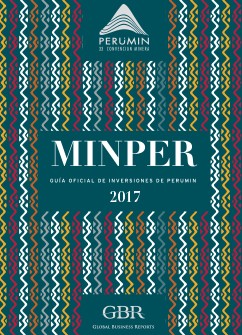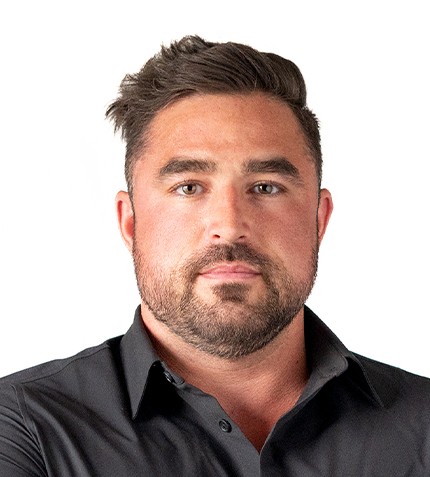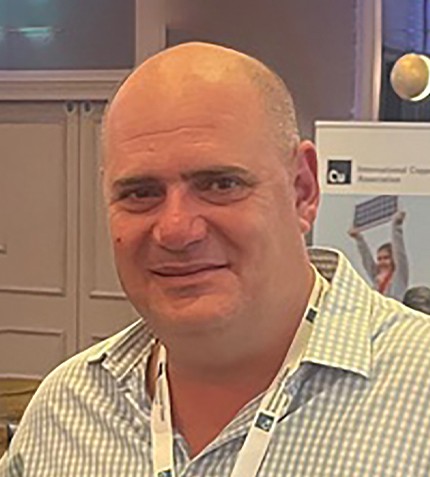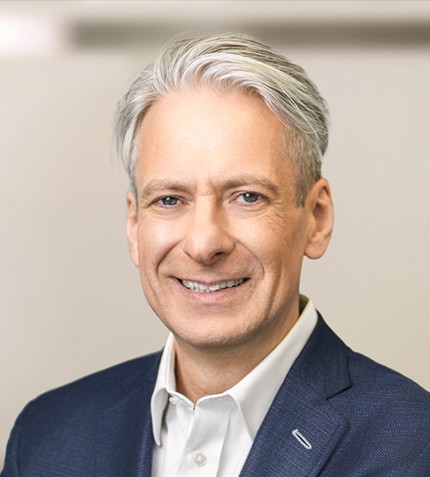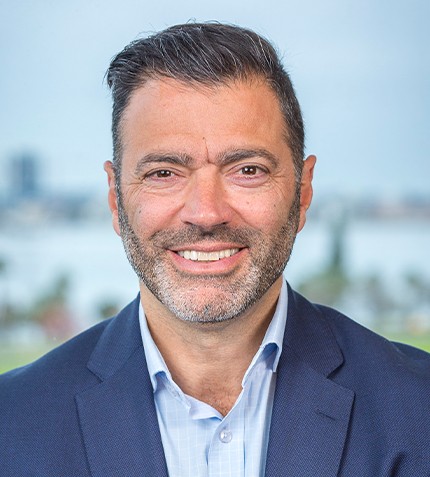After years of very low market conditions in Peru, it is refreshing to see project developers and explorers coming back to life.
RELATED PUBLICATION
ARTICLES FROM THIS PUBLICATION
The Junior Segment: Picking Up
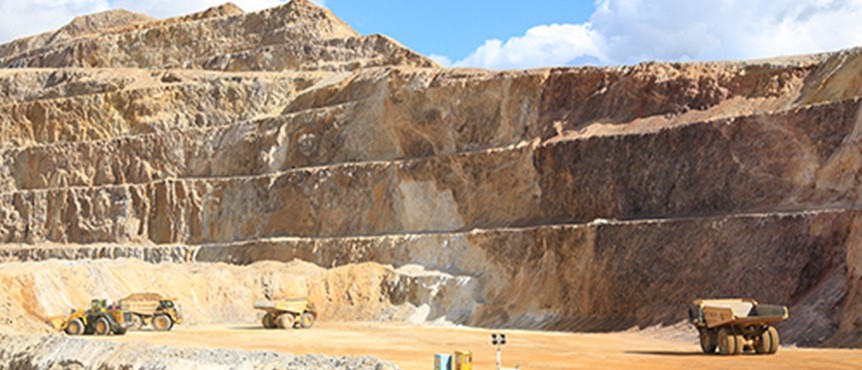
Two main trends have appeared in the market in recent years. On one side, you have those juniors who have learnt to navigate the low cycle through innovative business models, mostly aiming at generating cash-flow. On the other, the few juniors left with good assets and access to finance have benefited from much better market conditions to keep advancing their projects. This is an overview of the main companies active across the different niches of the business in Peru.
Gold processing
Cash-flow generating models go from developing small mining operations with the support of contractors and third party mills, like Lupaka Gold and PPX Mining are doing, to the capital participation in toll processing businesses, following the successful model of Dynacor. Inca One Gold Corp and more recently Montan Mining and Duran Ventures have been investing in the development of mineral processing facilities in Peru.
Last year, Dynacor completed the construction of its new, 300 mt/d mill in Chala, Peru. The company processed third-party ores for a production of 73,500 oz/y last year, and expects to reach between 88,000 to 92,000 oz/y in 2017. “Our mill is built to the specified ore in the Peruvian mines in order to maximize the recovery rate. Over the years we have built up our knowledge and learned how to process the ore efficiently, blending the material in the best possible way to improve our production results,” said Jean Martineau, president and CEO of Dynacor. Martineau explained that Dyancor’s model involved financing the company’s exploration with the profit from the gold processing, thereby avoiding dilution to its shareholders.
Inca One Gold has also invested in a gold processing business in Peru, although in this case the company does no exploration. After a rocky start with delays to obtain the local tax rebates the company was entitled to, Inca One is finally on track to process 100 mt/d at their Chala One plant in Arequipa: “We are processing high grade gold ore with more than 20 g/mt, so it does not take a lot of tonnage to have significant cash-flow. This year our revenues will be between $20 million and $30 million. The expectation is that we will be able to process 30,000 to 35,000 mt/y over the May 2017-April 2018 fiscal period,” said Ed Kelly, CEO of Inca One Gold.
Kelly described the new formalization process for artisanal miners as “the most exciting piece to the business right now.” Although the impact of this new process remains to be seen (previous efforts were highly ineffective), Kelly says there is a pool of more than 15,000 informal miners that could become formal suppliers: “Funnily enough, gold exports in Bolivia and Chile have increased over the last few years, even if no new licenses have been granted in those countries. Obviously, that gold is actually being produced in Peru’s black market. Once these miners are formalized, we will be able to buy ore from them,” emphasized Kelly.
Gold project development
With gold prices at stable levels and with Peru’s very competitive cost position in gold production, the market is hungry for new deposits. The prolific north-central mineralized belt is one of the main areas of interest according to the amount of mining concessions granted there over the last year.
Thomas Larsen, chairman and CEO of Eloro Resources, who are drilling the La Victoria property in Ancash this year, gave more details about these developments: “We now control 80 square km, adjoining Newmont to the south, which recently acquired a major land position. Also Barrick, Anglo American and Fresnillo staked ground in the nearby areas. Last July, First Quantum had also acquired a big land position to our eastern border, so there is a large audience in the area at this point.”
Eloro has recently signed an agreement with an Australian company, Cott Oil and Gas, that is funding expenditures for C$2 million to earn a 10% interest in the project and have the option to spend an additional C$3 million to obtain a 25% stake. La Victoria, located in Ancash, includes an epithermal gold system running 1.2 km vertically that Jim Steel, Eloro’s senior corporate advisor, considers to have the same geological setting as Shahuindo.
“We are permitted for 8,000 meters and the drilling campaign should take us through mid-2018,” continued Larsen. “In parallel to this, we are doing a lot of preliminary geophysics and sampling on the Ccori Orcco concession to prove the continuity of the mineralized system from 4,200 meters at San Markito to 3,000 meters at Rufina, and potentially deeper. We will also be doing fieldwork south of Rufina, towards the Newmont concessions. It is going to be a very active period for Eloro over the next 16 months,” said Larsen.
Meanwhile, Lupaka Gold is advancing towards production at the Invicta property. The company suffered delays to sign the access agreements with the local communities, and was further delayed earlier this year with the Coastal Niño floods in the area, but financing is in place –$6.1 million provided by Pandion Mine Finance in a gold prepayment agreement. The plan is to ramp up production using mining contractors this year.
“At 350 mt/d we have enough resources to be in production for around 10 years,” said Gordon Ellis, chairman and CEO of Lupaka Gold. “Maybe we could acquire an existing plant, or it may make more sense for us to build a plant up on site. There are half a dozen plants within a reasonable trucking distance that are quite willing and competing to process our ore,” he added.
On top of Invicta, which will be the key project to generate cash-flow, Lupaka has a joint venture with Hochschild for exploration at the Josnitoro copper property. Through geophysics they want to define targets to start drilling. Lupaka also owns Crucero, a project with an in-pit resource of 2.1 million oz of gold where Lupaka would like a buyer or a joint venture partner to take over.
The copper fever
As Peru continues to enhance its profile as the second largest copper producer, a number of juniors with good financial backing are trying to define the next saleable copper deposit. Investors remember very well the successful run of different copper juniors in Peru, such as the transactions involving Norsemont (acquired by Hudbay Minerals), Peru Copper (acquired by Chinalco) and Antares Minerals (acquired by First Quantum), among others.
John Black, who led the Antares transaction in 2010, is now the CEO of Regulus Resources, a company focusing on its AntaKori copper project in northern Peru. AntaKori is located next to the Tantahuatay gold-silver mine operated by Coimolache, a joint venture between Southern Copper and Buenaventura. Regulus has recently signed an exploration agreement with Coimolache to collaboratively share information and better understand the potential of the district. “Coimolache have basically bumped up against our land package,” declared John Black, CEO of Regulus.
AntaKori already has a copper-gold-silver resource of 295 million mt at a copper equivalent grade of 0.8%, which the company expects to expand this year through a 15,000 to 18,000 meter drilling campaign.
Black gave more details about the geology of the project: “Previous drilling campaigns at AntaKori found extensive skarn mineralization that remains open in most directions and is similar to other occurrences in Peru, most notably Las Bambas and Antamina. At AntaKori, the skarn mineralization is cut by breccia bodies with fragments of porphyry copper-gold mineralization, indicating probably porphyry mineralization at depth […] [Gold Fields’] Cerro Corona, located 6 km from us, is a porphyry deposit currently in production.”
The other big region for copper exploration is southern Peru, home to the majority of the large copper mines already in production. The area includes companies that have been known for a few years, including Panoro Minerals, as well as juniors that are fairly new, such as Kaizen Discovery and Pembrook Copper.
Panoro Minerals has PEA studies completed at both Cotabambas and Antilla, although the company is focusing its efforts on Cotabambas right now. Panoro counts Hudbay Minerals as a shareholder, and has a funding agreement with Silver Wheaton to cover expenditures until December 2018.
Luquman Shaheen, president and CEO of Panoro, summarized the main goals for 2017 at Cotabambas: “The first one is to drill 4,000 meters on the oxide mineralization north of the proposed pit. The second one is to drill the María José high-grade sulphide target –we plan to drill about 10,000 meters there, with a budget of $3 million. The third priority is to carry out metallurgical testing to improve the recovery rates in some of the high gold oxides and also in the transition zone material.”
Shaheen showed its confidence in the current copper fundamentals due to an upcoming copper supply deficit: “The tipping point into a deficit market in copper supply moved from 2020 to 2017. Since electric and hybrid vehicles use two to four times more copper than conventional vehicles, 25% of the worldwide supply for copper will be used just for electric cars in the future.”
Kaizen Discovery, a listed company backed by HPX, has recently redefined its strategy to put its British Columbia exploration aside and work on copper-gold deposits in Latin America. Their current focus is Pinaya, an advanced project that was under the radar for the last couple of years due to litigation between the previous owners.
Now, Kaizen owns 90% of the project, in partnership with ITOCHU of JAPAN who hold the remaining 10%. Pinaya already has a resource of 41.7 million mt containing 297.9 million lbs Cu and 656,000 oz Au (measured and indicated), and a further 40.2 million mt in the inferred category, for additional 319 million lbs Cu and 388,000 oz Au. “In these poly-metallic systems you are exposed to diversification very quickly. Having the gold credits is absolutely fantastic, I personally find these porphyry copper-gold systems very attractive,” declared Tom Peregoodoff, president and CEO of Kaizen Discovery.
Peregoodoff explained why, in his opinion, there is a discontinuity between the resource value and the market valuation of Pinaya : “The property never really had a high-level analysis to understand the relationship between the known skarn resource, the gold oxide prospect, as well as the potential porphyry centers within the belt. The group that made the discovery focused on proving the resource, but the property is very big and could potentially host other porphyry centers, which typically appear in clusters.”
Finally, another upcoming player in the copper exploration segment is Pembrook Copper, a private company established as a grassroots explorer eight years ago that is now moving along the Pecoy and Torurume deposits on the coastal porphyry belt near Arequipa. At Pecoy, Pembrook already earned-in a 51% interest from Trafigura after spending $13 million, and through further expenditures it can earn an 80% stake. The actual resource at Pecoy is 612 million mt at 0.34% Cu plus gold, silver and molybdenum credits, at a cut-off grade of 0.25% Cu.
“Because of Pecoy’s location at the coastal belt, the economics are much better than some of the other porphyry projects in the Andes where there is no infrastructure and you are a long way from the coast,” commented Brian Booth, president and CEO of Pembrook Copper. “Pecoy is going to be an attractive project for major copper producers because it has the size and the location to be a mine for a long time. We are at very low elevation and it is a desert, so no-one lives on our actual project area – that means no relocation will be required,” he added.
This year, Pembrook has a budget of $5 million to work on engineering studies at Pecoy and to start drilling the Torurume project, which is 100%-owned by Pembrook. With regards to the possibility of listing the company, Booth said: “We plan to stay private at this time, but we are completing all the paperwork that would be required if going public was a desire for us over the next year or two.”
Zinc – a new outlook
A company that has benefited from the extraordinary run of the zinc price over the last few months is Tinka Resources. After the company’s share price hit rock bottom in the first months of 2016, the market situation changed drastically for the better. Indeed, zinc had not traded at more than $1.20/lb since 2008, noted Graham Carman, president and CEO of Tinka.
Last year, the company released a new resource for its Ayawilca project in Central Peru, with 18 million mt at a zinc equivalent grade of 8.2%, while it also ran initial metallurgical tests. “We took the typical grade from a chimney at West Ayawilca, grading 7% to 10% zinc, and we obtained a 52% zinc grade concentrate with no pollutants. There is some iron associated with the sphalerite, but there are no penalties for arsenic or manganese. This first study was to see if we could produce a marketable concentrate, and the answer is yes, we can,” said Carman.
While last year’s resource estimate unveiled a potentially valuable tin component in the deposit, Tinka’s focus right now is on the zinc. Carman added: “I think we are very close to the point where the project has enough tonnage already, but we want to make it more robust and prove there is potential for much more mineralization […] The exploration objective this year is two-fold: to target a global resource of over 30 million mt, and to continue to add significant high-grade chimney-style zinc mineralization.”
Uranium and lithium
The uranium market has been low for a few years –even before Fukushima, the uranium price was on a downtrend. In this context, the market has seen a great deal of consolidation, and Peru was no exception. With the combination of Macusani Yellowcake and Azincourt Uranium, the resulting entity, Plateau Uranium, was able to build up a large uranium resource of 124 million lbs in the Macusani plateau in south-eastern Peru. Last year, Plateau updated its PEA for a production model of 6.1 million lbs/y over 10 years, which would create one of the top five uranium mines worldwide. Now, the company is working on an updated PEA to incorporate the lithium component of the deposit as part of the operation as well.
“There is more lithium at Macusani than in the brine deposits of Argentina, Chile and Bolivia together,” affirmed Laurence Stefan, COO of Plateu Uranium. “Because of the low grades, you have to look at it as a by-product, but as a serious by-product. Lithium gets extracted into the same solutions when uranium is dissolved –it is just a matter of deciding the route to extract lithium and what the final product is going to be: lithium hydroxide or lithium carbonate,” Stefan added.
Ted O’Connor, CEO of Plateau Uranium, assured that the fundamentals are very solid both for the Macusani project and the general uranium market, notwithstanding current low spot uranium prices: “Annual uranium demand is 170 million lbs, while mine supply is 150 million lbs, now going down to 135 million lbs [due to output reductions by Cameco and the Kazakhstan government]. Nobody can make money at the current prices, but the spot price is relatively insignificant because almost everything is contracted for the medium and long terms at prices closer to $40/lb […] The cash cost at our Macusani project, according to the PEA, is $17.28/lb U3O8 including royalties.”
The fertilizers market
Peru is already a sizeable producer of phosphate rock from the large Bayóvar operation in the Sechura desert in northern Peru. Developed by Vale, the operation has recently been acquired by Mosaic as part of Vale’s overall sale of its fertilizer assets.
The area hosts several companies developing phosphate rock projects hoping to feed the growing fertilizers market worldwide. These include Fosfatos del Pacífico (Fospac), a joint venture between Peruvian company Cementos Pacasmayo and MCAP (Mitsubishi and Zuari); Focus Ventures; and GrowMax Resources.
Focus Ventures’ Bayóvar 12 project is already quite advanced, with 58.8 million mt of proven and probable reserves. The pre-feasibility study for the project contemplates a $167 million capex and the production of 1 million mt/y at 24/28% P2O5. Gordon Tainton, president of Focus Ventures, described the next steps for the project: “Moving towards feasibility, with two main optimization objectives: the capital expenditure and the operational cost. We are looking at continuous mining, with the use of a bucket rotary wheel excavator system with integrated conveyors stripping off the waste burden. We are anticipating this will provide the project improved operational costs.”
Focus own 70% of the Bayóvar 12 project, while their partners JPQ hold the other 30%. The advantage here is that JPQ has a port nearby, which is a key component for the project. “Provided we obtain the financing, we are perhaps 30 months away from production,” affirmed Tainton, who emphasized the high quality of the phosphate rock in the area: “The Sechura basin phosphate rock is known to be a highly reactive, slow-release phosphate rock. The company believes our product can be used as a direct application nutrient to specific tropical soil crops like palm oil, and also will be suitable for the traditional phosphate fertilizer product producers.”
Meanwhile, GrowMax Resources (previously known as Americas Petrogas) rebranded after selling its oil and gas assets in Argentina and is now well funded to advance its fertilizer business in Peru. The company has two projects in the Bayóvar area: on one hand, it has a potash resource in brine, and it is advancing the engineering for a pilot facility to produce 5,000 mt/y of sulphate of potash (SOP). The plan is to start construction this year and be in production in 2018. “The purpose of this demonstration facility is two-fold: firstly, the project will generate some cash and will pay for itself. Secondly, it will help us perfect the design for a much larger SOP project,” said Stephen Keith, president of GrowMax Resources.
Secondly, and similarly to Focus, the company is advancing a large phosphate project, which already has a PEA for a 1 million mt/y operation with a grade of 30% P2O5., although Keith affirms that there is plenty of room for optimization: “We are very confident that we can significantly reduce the capex and and opex. Additionally, we want to look at other products such as direct application phosphate rock products that we can sell as an organic fertilizer, SSP, etc. We are also looking at a small starter mine with much lower startup costs, to be able to target the local market.”
All players across the segment have realized that the phosphate business is different than the traditional metallic mining project development. The commercial component is key, this is why Fospac brought in Mitsubishi and Zuari as joint venture partners; and this is why Focus Ventures recently hired Gordon Tainton, an executive with decades of experience in the fertilizers business.
In the words of Stephen Keith of Growmax: “The biggest mistake by juniors in this segment is that we tend to focus on the mining side of things, but that is just one piece of the puzzle. The real skill is to be able to sell the product. If this was a gold mine, you would be basically mining a bank account. In phosphates, it is completely different. Pricings and clients vary all over the place.”




